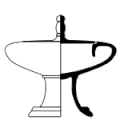Exaleiptron
The exaleiptron was an ancient Greek vase shape. This shape was a lidded vessel for storing ointments or oils.
The exaleiptron belongs in the women's chamber and in the grave cult. The vessel can have a low or high foot; sometimes this is also in three parts. The body of the vessel is wide and flat and usually has no handles. It has a cylindrical, inwardly directed edge. So you could swirl the mostly expensive liquid content without spilling it. Usually a lid was also included with the vessel.
Incorrect names have also been used for this vessel. The names of the donor vessel plemochoe , which can no longer be precisely determined today, and the drinking vessel kothon are sometimes incorrectly used for this vessel shape.
Böotisches Black varnish -Exaleiptron to 550/25 v. Chr.
Attic - black-figure exaleiptron of the KX painter on a tripod stand, around 580/70 BC Chr.
literature
- Ingeborg Scheibler : Exaleiptra. In: Yearbook of the German Archaeological Institute . 79, 1964, pp. 72-108.
- Ingeborg Scheibler: Kothon - Exaleiptron (Addenda). In: Archäologischer Anzeiger . 1968, 389-397.
- Wolfgang Schiering : The Greek clay pots. Shape, purpose and change of form (= Gebr.-Mann-Studio-series ). 2nd, significantly changed and expanded edition. Mann, Berlin 1983, ISBN 3-7861-1325-4 , pp. 142f.



